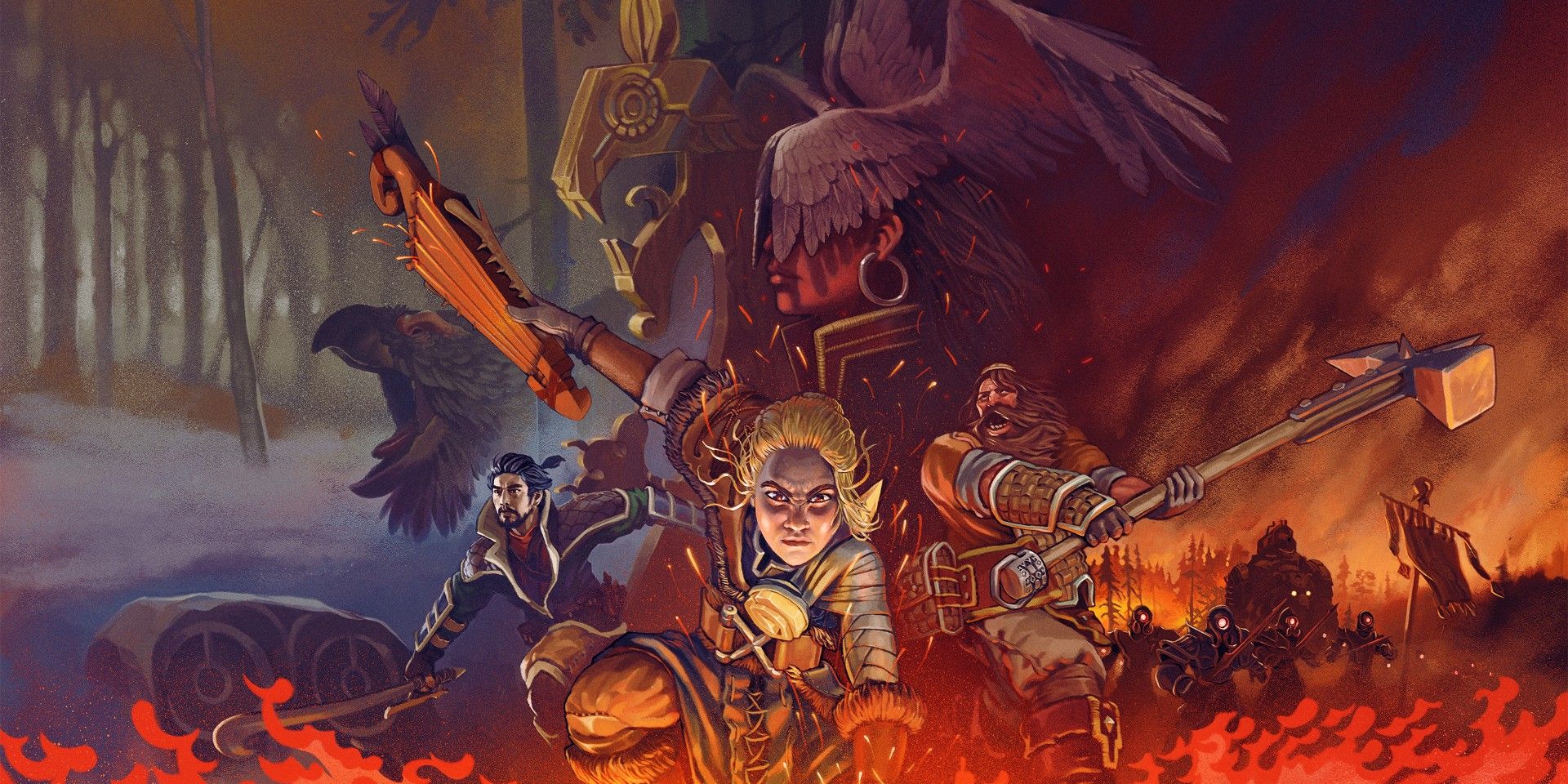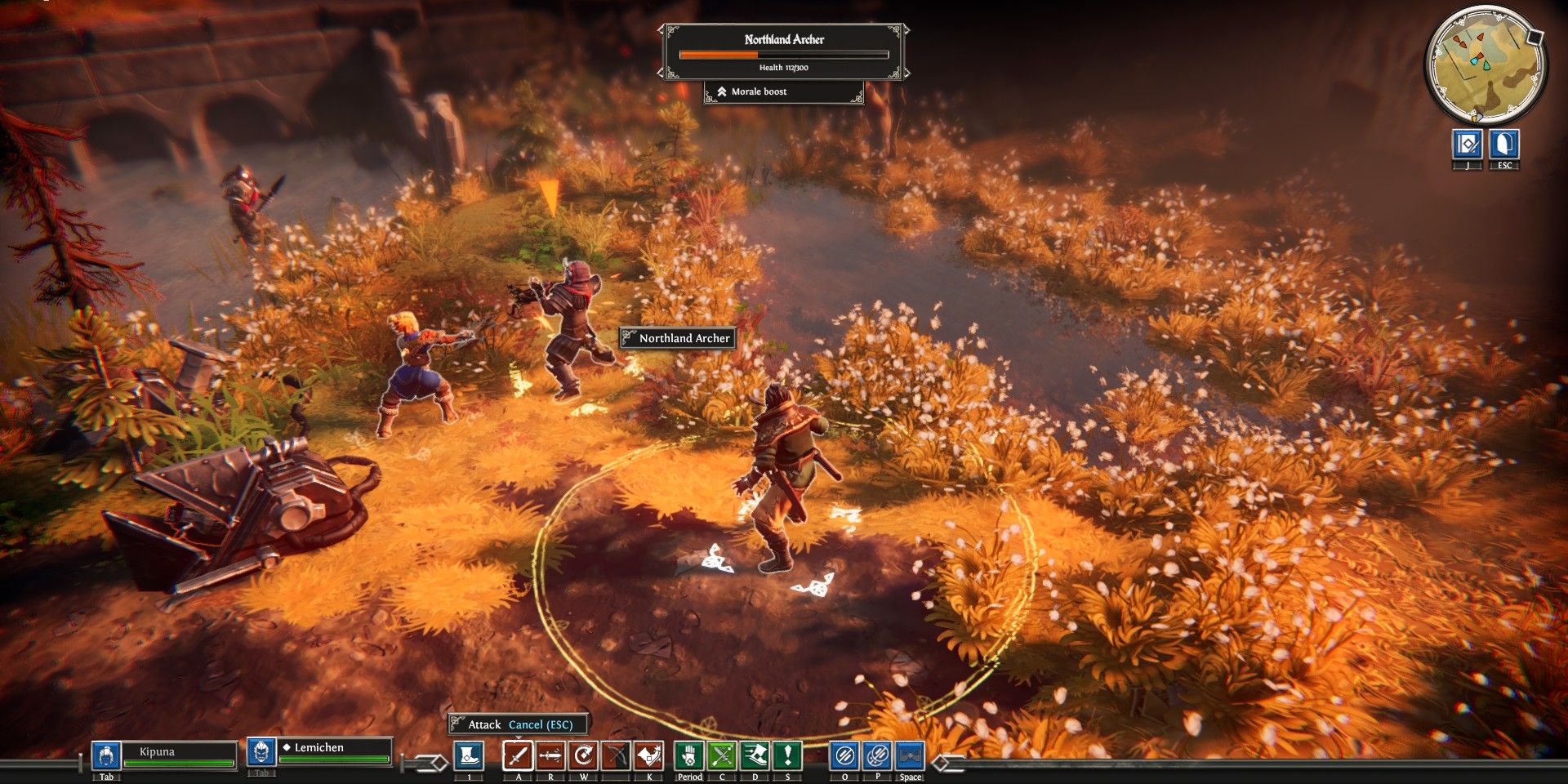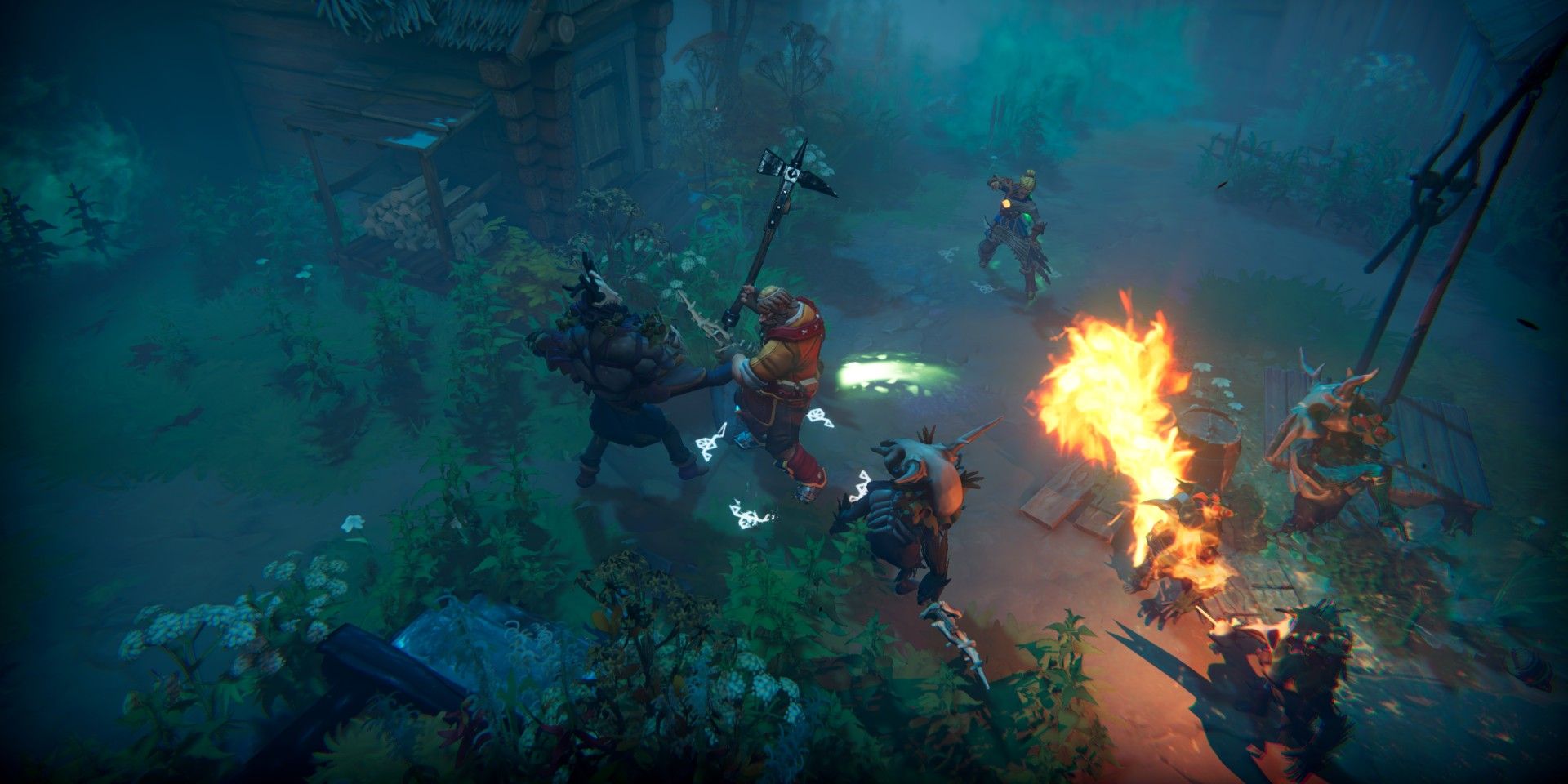Iron Danger is a difficult title to define. At first glance it looks like just another isometric RPG, like Diablo or Path of Exile. And there are plenty of RPG elements to go around; unlockable skills and magic abilities that you can upgrade as your characters progress through the story. But as an RPG, Iron Danger stands out as something truly unique. Playing it doesn't feel like playing a typical RPG; it feels more like, of all things, Superhot. In Iron Danger, you don't just control your characters and their various combat abilities. You control time itself.
The first thing that stands out about Iron Danger is the art direction. The game takes place in a setting that feels both new and familiar at the same time, an interesting blend of Norse aesthetic sensibilities and menacing steampunk technology. It's rendered very well, and the landscapes and creature designs are consistently engaging, though the camera is often pulled too far back to appreciate all the details.
The second thing that stands out about Iron Danger is, of course, its time control mechanic. Your protagonist, the sole survivor of a village destroyed by war, finds herself pierced through the heart by a magical stone that gives her power over time itself, as well as a suite of more conventional magical abilities that are unlocked as you play. Every combat encounter in Iron Danger is measured in heartbeats; every action a character takes will play out over a certain amount of them. Your time magic gives you the power to rewind or fast-forward time heartbeat by heartbeat, and freely change your characters' actions depending on the outcome. For instance, one of your allies might make a powerful attack that takes three heartbeats, and leaves him vulnerable to quicker attacks throughout the duration. If you rewind time to before he makes that attack, he can perform a quick, single-heartbeat block instead, completely avoiding the damage he took, and then attacking once his opponents have dropped their guard. This power is not tied to any resource and has no limits save for the limited window of time you can control.
As one can imagine, the stakes in combat drop significantly when you have the power to undo your opponent's actions with a thought. Fortunately for the game's playability, they don't drop away entirely. Just because you know what an opponent's about to do doesn't mean you can easily prevent it. Just because you know the action you want a character to do ends poorly doesn't mean your other options will fare much better. Essentially, combat encounters in Iron Danger play out less like conventional combat encounters and more like puzzles. You're given all but free reign through the timestream to experiment with your characters' actions and determine how the enemies will act in return. You're encouraged not only to defeat your enemies but to mitigate your losses as much as possible, and be tactical with which moves you need to rewind and which advantages you can press. It's a wildly unique take on strategic gameplay.
This fascinating mechanic definitely works better in some cases than in others. When a character gets damaged by a trap or an environmental hazard, for instance, the game stops time so you can rewind and avoid it. This reduces these hazards to time wasters at best and severe annoyances at worst. More complicated puzzles can become even more bothersome, especially because time passes very quickly when you don't have it stopped. If you try the wrong solution to a puzzle or obstacle, you could spend resources that you aren't quick enough to get back. Furthermore, not every combat encounter is particularly engaging. Unsurprisingly, the ability to stop time slows gameplay considerably, and when the game throws uninspired waves of faceless enemies at you, it can be a slog to work through them in search of the ideal timeline. Combat is surely not helped by the camera controls, which are clunky and unintuitive. The camera likes to default to very bad angles and it can be quite a bother to fix it.
When things come together, though, Iron Danger is a gem. Your control of the flow of events in a battlefield is unprecedented, and when your characters' timelines sync up just right for you to pull off a powerful combo it's a great feeling. Iron Danger is not a perfect game, far from it. The camera sucks and the encounters are hit or miss. But when they hit, they hit hard, and the power trip of feeling like a time-bending mastermind is a hard one to deny. If that's the sort of thing that appeals to you, Iron Danger isn't hard to recommend.
Iron Danger releases for the PC on March 25, 2020. A digital download code was provided to Screen Rant for purposes of review.



